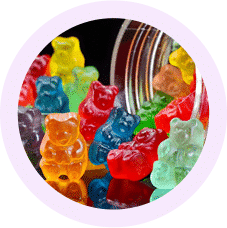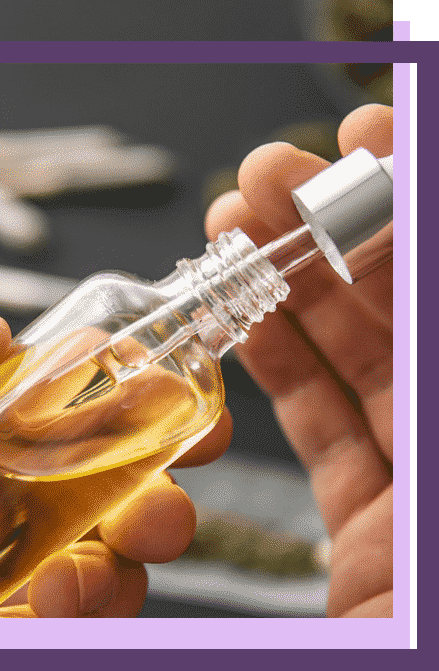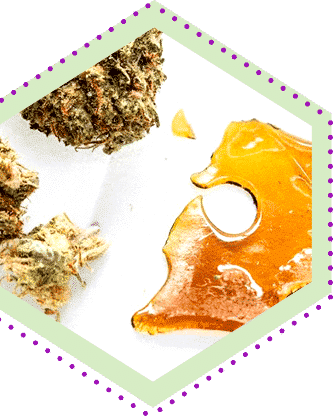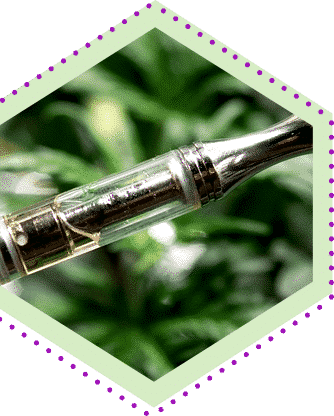If you haven’t tried cannabis by now then you are missing out in a variety of ways. Since legalization in 2018, cannabis has become much more accepted in Canadian society. According to a government survey, twice as many Canadians have tried marijuana for the first time since it was legalized.
This increase led to a steady increase in marijuana sales across the country. In fact, studies show that cannabis generates about $8 Billion towards Canada’s economy per month. This makes sense with online weed becoming available as an option in a variety of cannabis store.
So, what’s the big deal about cannabis, and why are so many people joining the Cannabis Canada community?
In this guide, we will go into detail about all things cannabis. We will journey into what cannabis is, the different subspecies, characteristics, effects, and uses. Also, we will outline how to measure, store, grow, and smoke weed properly. Lastly, we will take a look at how and where you can buy weed online in Canada. So let’s get started.
First Off, What is Cannabis?
A cannabis plant is a genus of the Cannabaceae family and is used primarily for its medicinal and therapeutic effects. Depending on tetrahydrocannabinol (THC) levels, a cannabis plant can be classified as marijuana or hemp. If cannabis has 0.3% or less THC then it is classified as hemp. Anything over 0.3% is determined to be marijuana.
Cannabis is widely known for its distinctive aromas and intoxicating effects. Weed has been cultivated for thousands of years and practices have been perfected over that time. It has led to a wide variety of subspecies with differing tastes, smells, effects, and physical appearances.
Cannabis has been given many names over the years and the jargon gets very localized depending on where you live. However, there are general terms used as cannabis synonyms such as the ones mentioned next.
|
Cannabis |
Marijuana |
Weed |
Pot |
|
Bud |
Ganja |
Herb |
Dope |
|
Chronic |
Grass |
Greens |
Nuggets |
|
Reefer |
Mary Jane |
Flower |
420 |
Brief History of Cannabis
Cannabis has been around for ages, and there has been a lot of research done to uncover its origins. For instance, a 2014 report by geographer Barney Warf outlines the marijuana plant’s interesting history. The study uncovered that cannabis had its roots thousands of years ago in East and South Asia before its shift to the Middle East.
From there, the cannabis plant made its way to Africa, and then eventually found its way to Canada and the United States. This illustrates just how resilient and encroaching cannabis can be. It sure did not take long for cannabis to make its way across the globe.
This can be seen when looking at the origins of landrace strains and how long ago they began. Landrace strains are cannabis strains that are native to the lands. These types of strains are found all over the world and have adapted to a wide range of environments. This has led to a large number of subspecies, each with their own unique attributes.
Over time cannabis farmers have adopted new and innovative techniques to crossbreed weed strains. This allows for unwanted genetics to be bred out and for only the strongest genes to be passed on. Also, it allows for the desired flavours, aromas and effects to be added into the mix.
What resulted was a huge influx of new cannabis strains introduced to the world. However, marijuana has had a rocky past, to say the least. For large portions of recent history, weed has been viewed as an illegal substance. It was not until marijuana legalization took hold across many parts of the world that cannabis has become widely accepted. There were even times when marijuana was once actually a legal cross-border import in the US.
The good news now is that the cannabis market is no longer controlled by street gangs and organized crime. Now it is cannabis enthusiasts trying to provide medication for those in need. Medical and recreational marijuana users can now buy weed from a brick-and-mortar weed store or mail order marijuana dispensary. Cannabis has certainly come a long way from its Asian origin to weed online being available 24/7.
Cannabis Canada:
An Origin Story
Cannabis has been around for ages, and there has been a lot of research done to uncover its origins. For instance, a 2014 report by geographer Barney Warf outlines the marijuana plant’s interesting history. The study uncovered that cannabis had its roots thousands of years ago in East and South Asia before its shift to the Middle East.
From there, the cannabis plant made its way to Africa, and then eventually found its way to Canada and the United States. This illustrates just how resilient and encroaching cannabis can be. It sure did not take long for cannabis to make its way across the globe.
1801
Hemp seeds were distributed by the Lieutenant Governor of Upper Canada in an effort to stimulate the economy..
1923
The Narcotics Drug Act Amendment Bill was enacted and made cannabis illegal.
1969
The Canadian government conducted research on the non-medical uses of cannabis.
2001
The Marihuana for Medical Access Regulations (MMAR) was enacted, allowing for licensed medical users to grow their own cannabis.
2013
The Marijuana for Medical Purposes Regulations (MMPR) was created. This covered the commercial licensed industry’s production and distribution of medical marijuana.
2016
The MMPR was replaced with the Access to Cannabis for Medical Purposes Regulations (ACMPR).
2018
The Canadian Government passed the Cannabis Act legalizing marijuana for both medical and recreational purposes.
So what does this all mean?
Is weed legal in Canada?
The answer is yes, marijuana legalization Canada rules and regulations are already in place. Canada Post even outlines the guidelines for sending and receiving cannabis. However, there are different laws governing cannabis between the Provinces and Territories. For instance, cannabis Ontario, cannabis BC, cannabis Alberta, cannabis NB, and cannabis NL will all have different rules.
Overall, the current state of the Cannabis Canada Community is that of acceptance and curiosity. Now marijuana users can order weed online Canada or at a Canadian weed dispensary with ease. This allows Canadian access to a wide variety of premium grade products that they normally wouldn’t have.
Over the years, Canada has built a reputation for producing some of the most potent and flavorful in the world. On top of that, Canada has some of the best prices on bud around. This is great news for the cheap weed Canada community who are always looking for great deals. This is why so many cannabis enthusiasts from far and wide visit. The future looks bright with the prevalence of cannabis consumption in Canada.
What Are Cannabinoids?
There are over 480 natural components found in cannabis plants. Of these, 66 have been classified as cannabinoids. The most well known is delta-9-tetrahydrocannabinol (THC) and is primarily responsible for the intoxicating effects normally associated with cannabis.
However, studies have shown that many of the other cannabinoids help moderate the effects of THC. Cannabinoids interact with receptors in the body’s endocannabinoid system (ECS) to produce the varying effects of cannabis. Basically, certain cannabinoids (e.g. THC) attach to the brain’s receptors sending responses throughout the body. Other cannabinoids such as CBD moderate these interactions.
Subcategories of Cannabinoids:
- Tetrahydrocannabinol (THC)
- Cannabidiol (CBD)
- Cannabichromene (CBC)
- Cannabinodiol (CBDL)
- Cannabinol (CBN)
- Cannabigerol (CBG)
- Cannabicyclol (CBL)
- Cannabielsoin (CBE)
- Cannabitriol (CBT)
You probably have heard about the age-old battle between THC vs CBD. But which one is better, THC or CBD? Or is it even really a battle? Do these opposing forces actually work in harmony to provide the ideal level of effects?
Let’s take a look at what each is and what they have to offer.
What is THC?
Tetrahydrocannabinol (THC) is the primary compound in cannabis that induces intoxication. THC is the most known and researched cannabinoid found in marijuana.THCA is what is found in raw marijuana buds. In order for THCA to be able to get a user high, it needs to be converted into THC. This is done by a process called decarboxylation. Basically, you need to heat up THCA to a certain temperature to activate it into THC.
Studies show that tetrahydrocannabinol is a lipid-soluble chemical that binds to fat in the body. And once activated, intoxicating effects are felt once the THC binds to the receptors in the brain. Once attached to the brain’s receptors, the effects of THC are transmitted throughout the body. The result is the euphoric sensations that are normally associated with cannabis use.
What is CBD?
Cannabidiol (CBD) is a non-intoxicating compound that is the second most known cannabinoid found in marijuana and hemp. Unlike THC, CBD does not get users high in the traditional sense. It does, however, assist other cannabinoids in providing a balanced set of effects.
CBD acts as a moderator of THC and controls how it interacts with the body’s endocannabinoid system. This means that CBD will limit the chances of negative effects caused by the overconsumption of THC. For instance, cannabidiol is known to reduce inflammation caused by THC.
CBD can be taken on its own, but it is known to work best when taking it with THC products. However, CBD is ideal for those who want the therapeutic benefits, but do not wish to get high. Just remember that the effects will not be those that are associated with THC.
What is CBN?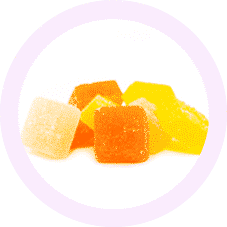
Cannabinol (CBN) is another non-intoxicating compound found in cannabis. It is best known as the cannabinoid created during the degradation process of THC. As time passes THC breaks down into CBN. Current research hints that this cannabinoid may only be 1/4th the potency of THC.
CBN might be best known for its sleep-inducing properties. It is for this purpose that cannabis growers who are looking for the couch-locking effects tend to let their plants flower for longer. This gives more time for the THC to break down into CBN, giving it that indica-like effect.
Final Word on Cannabinoids
Studies have shown that THC and CBD work in unison to provide a good balance of therapeutic effects. For example, CBD moderates the levels of THC the body interacts with. This means a lower chance of unpleasant effects normally experienced with overconsumption. Another example is that studies have shown that CBD prevents THC induced inflammation. The beneficial effects that CBD and THC have on each other should put to close the notion of a CBD vs THC relationship.
Different Types
of Marijuana
As we know, cannabis has been around for quite some time now. Over many years, new and diverse subspecies have been brought to existence. And within these subcategories are countless weed strains that have been bred to perfection.
Cannabis plants can be broken down into two main categories: Hemp and Marijuana. Cannabis with less than 3% THC is categorized as hemp, whereas anything higher falls into the marijuana category. Hemp is mostly used for its fibers or to extract the high levels of CBD. Marijuana is mostly used for its medicinal properties.
Furthermore, marijuana can be broken down into two further categories: Photoperiod and Ruderalis (Autoflower) Strains.
Photoperiod Strains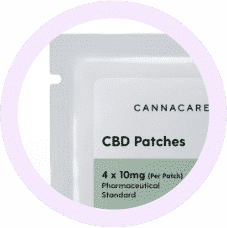
Photoperiod strains are cannabis plants that grow depending on a specific light schedule. For example, a photoperiod plant will grow in a vegetative period for a certain amount of time while the plant is receiving more than a certain amount of light.
The cannabis plant will then start to flower (bloom) when the light drops to a certain amount per day. Twelve hours of light and twelve hours of dark is what is normally used for an indoor grow to induce flowering. Outdoors is a bit more tricky since geography and the environment needs to be taken into account. Outdoor marijuana plants usually start to flower much sooner than the natural 12/12 light schedule.
Photoperiod cannabis plants are known to provide larger yields and higher quality buds than autoflowers. This is not always the case but is for the most part. Also, these pot strains are known to be stronger and hardier plants. However, autoflower genetics are definitely making a name for themselves in recent years. Expert cannabis breeders have come up with innovative ways to create the best autoflower genetics.
Ruderalis (Autoflower) Strains
A ruderalis strain (aka Autoflower Strain) is a cannabis plant that finishes based upon a set time period. For instance, autoflower strains that have a 150 day period will finish in about 150 days regardless of the environment. However, there are ways the plant can slow down, but they usually are due to poor conditions or plant health.
Autoflower plants typically grow much smaller and yield much less than photoperiod strains. This is due to autoflowers not having the luxury of additional vegetative growth time. The set time period for the grow is a greatly limiting factor. However, it is possible to still get a decent yield. Just don’t expect a pound of weed from a single marijuana plant each harvest. It is surely possible for high yields, but it is uncommon for the average pot grower.
However, autoflower strains are growing in popularity because of their simplicity and low maintenance. These strains are ideal for those just entering into growing weed, or for those who don’t have much time.
Breaking Down
Cannabis Strains Further
Autoflower and photoperiod strains can be broken down into smaller subcategories. The three main ones being Indica, Sativa, and hybrid strains. Within these subcategories include all of the best weed strains that have made names for themselves throughout history.
Let’s take a look to see what makes these three main cannabis strains unique from one another.
Sativa vs Indica cannabis has always been a hot topic in the marijuana industry due to their differing characteristics. How can two of the same type of genus of plant be so different, and what caused this? Let’s find out what is the difference between Indica and Sativa cannabis.
Below, we will outline the difference between Sativa and Indica. It’s important to note that the effects will vary from strain to strain and grow to grow.
Sativa vs Indica Chart
SATIVA VS INDICA |
INDICA |
SATIVA |
Plant |
Small-Medium |
Medium-Large |
Buds |
Dense |
Fluffy |
Effects |
Relaxed |
Uplifted |
Uses |
Anxiety |
Anxiety |
Growing |
8-9 Weeks Flower Time |
10+ Weeks flower |
Indica Strains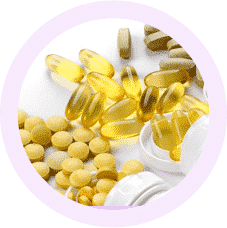
Indica weed (genus Cannabis indica) is a subset of cannabis that is known for its effects suitable for night use. Also known as indica flower, it commonly induces a couchlock effect and deep relaxative sensations. This makes indica strains ideal for those with trouble sleeping.
The most common medical uses of indica strains are to treat symptoms of anxiety, depression, and stress. Indica marijuana is also great for those looking for relief from aches, pains, spasms, or the inflammation associated. It is also useful in stirring up an appetite. Even PTSD sufferers have reported that indica dominant strains help them cope.
Indica strains are characterized by being short and bushy plants. They are known to take less time to flower than other strains. The average flower duration is between 8-9 weeks for indica weed. This makes Indica cannabis ideal for cooler environments with short summers.
The buds of cannabis indica are commonly medium-sized, round, and dense when compared to other types. Some people even compare some strain’s buds to golf balls.
Whatever the case, there are literally thousands of indica strains in the world. So if there are so many, how can you know which ones are worth trying?
Best Indica Strains
Have no fear, we have you covered. Below are links to some of the most sought after and best indica strains on the market.
|
|
|
Sativa Strains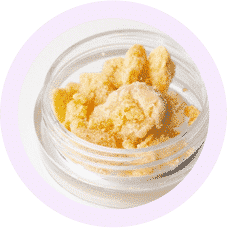
Sativa weed (genus Cannabis Sativa) is a subset of cannabis that is known for its effects ideal for daytime use. These strains are commonly used for their uplighting, creative, and energetic effects. Many sativa strains are great for those needing to be more socially active. However, some sativa strains can actually induce effects common to indica weed.
Similar to indica weed, sativa strains help treat symptoms of anxiety, stress, and depression. It also helps induce an appetite amongst users and helps ease aches and pains. Where sativa strains differ is that they help users who lack focus, creativity, and energy.
Sativa strains are characterized by being tall plants with long and thin leaves. They are known to take a much longer time to flower than their indica counterparts. These strains usually take over 10 weeks to flower, where some can even flower for much longer.
The buds of Sativa cannabis are typically large and cone-shaped in appearance. They are normally not as dense as indica buds, but this is just a guideline as it can vary.
So we already have seen the best indica strains, so what about the most popular sativas?
Best Sativa Strains
|
|
|
But what happens if you mix sativa and indica genes together, and is that even possible? Let’s find out what happens when indica and sativa plants are bred together.
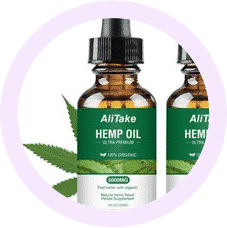 Hybrid Strains
Hybrid Strains
Hybrid weed is the result of crossbreeding indica and sativa genetics. This is done by taking the pollen from a male flower and pollinating the female plant. Then instead of producing buds, the female plant will produce seeds that share genes with each parent plant.
The result is a cannabis strain that provides a balanced set of indica and sativa effects. Perhaps the biggest advantage of hybrid strains is the wide range of therapeutic effects and benefits. This makes many hybrid strains great to use any time of the day. However, the effects will vary so it’s a good idea to do research about the strain before purchasing.
Hybrid cannabis can grow in a variety of ways depending on the particular strain. Just like a child, a hybrid plant can have genes more resembling one parent than the other. So one cannabis seed from a mother plant can produce a plant that is very similar to the mother. Whereas another seed from that same mother can produce a plant that resembles the father.
The same can be said for the buds of hybrid plants. Some can look like sativa weed, whereas others can look like indica nuggets. The percentage of sativa or indica can often have a large influence on the buds as well.
Now let’s take a look at some of the top hybrid weed strains available to order now.
Best Hybrid Strains
Below are some of the most sought after and best hybrid strains on the market.
|
|
|
Cannabis Characteristics
Physical Traits of Marijuana Flowers
Cannabis is not only known for its effects but also the plants’ aesthetically pleasing appearance. Marijuana flowers can possess a wide range of vibrant and stunning colours, making them stunning beauties. A full flowering healthy cannabis plant is visually appealing with mouth-watering buds everywhere.
The main physically defining characteristics of buds that determine quality are the colors, trichomes, size, and density.
Colours
Cannabis buds are known to be some of the most visually appealing flowers. They possess a variety of rich colours from tropical coloured buds to deep forest hues.
The most common colour associated with weed is green, and for good reason. Marijuana buds are commonly one shade of green or another. These buds can appear as a deep, bright, lime, light, dark, forest, or olive green. In addition, some phenotypes can possess purple, blue, and even pink hints. Many growers lower the temperature late in flowering to help bring out the different pigments in the leaves and buds.
Also, the hairs of the buds can range from being beautiful orange in colour to be a deep or fiery red. They can even appear as earthy brown or vibrant amber hairs that run throughout the buds. Some cannabis flowers have a lot of hairs whereas others have only a little.
Trichomes
Trichomes are the parts of the bud that contain the THC and other therapeutic compounds. Also known as crystals, trichomes are what give buds that sticky icky feeling. In general, the more trichomes the better.
Also, it is said that when a decent amount of trichomes turn amber the buds are in their prime. This usually happens late into flower and signals to the cannabis farmer that it’s time to harvest.
Size and Density
Cannabis flowers can be a variety of different shapes, sizes, and densities. For example, many sativa buds are large cone-shaped airy buds. However, this is not always the case. Many sativa buds are quite dense, just not as dense as many indica nuggets.
Indica buds are more indicative of being smaller, rounder, and denser in structure than sativa buds. However, the size and shape of the buds largely depend on the particular plant, grower, and environment.
Moisture Level
Bud quality is largely dependent on if it was dried and cured properly. You don’t want over moist buds or dry buds that crumble easily. The ideal moisture level is between 59-63% humidity. The majority of the cannabis you will smoke in your life will be at a moisture level below this level. This is because it takes time for cannabis to reach the user, giving the buds more time to dry out.
The Smells of Weed
What Are Terpenes?
Terpenes are compounds in cannabis that are responsible for the aromas that are commonly associated with marijuana.
There are over 100 identified terpenes that work in conjunction with cannabinoids to induce a variety of effects. This is known as the entourage effect. Let’s take a look at the main type of terpenes and their properties.
Main Terpenes Found in Cannabis
Myrcene
The most plentiful terpene found in cannabis. Nearly every strain can be found with a large portion of myrcene. This terpene is said to have a fruity, yet musky aroma. This terpene is said to potentially induce relaxing and sedating effects.
Limonene
The second most abundant terpene found in marijuana. As the name suggests, this terpene is found in citrus fruits. Limonene is also the reason why certain strains have such a strong lemon taste and smell. This terpene is said to provide an increase in mood and reduction in stress.
Pinene
As the name suggests, these terpenes are found in pine trees. It is what gives them that sharp smell we all know. This terpene is said to increase alertness and memory retention.
Caryophyllene
This terpene is what gives certain buds its peppery and spicy undertones. Caryophyllene is commonly found in cinnamon, basil, cloves, and rosemary. This terpene is the only one that acts as a cannabinoid. The most common use of caryophyllene is for relief from stress.
Linalool
When you think of the smell of weed, it is likely linalool you are thinking of. It is the smell that lets people know there is weed nearby. This terpene has a floral scent and is used for its sedative and mood-enhancing effects.
Terpinolene
This terpene is commonly found in nutmegs and lilacs. It has a fruity aroma and is known to provide energizing and uplifting effects.
Bisabolol
Another floral smelling terpene is bisabolol. This terpene is commonly used in cosmetics and perfumes due to its pleasant scents. Bisabolol possesses strong analgesic properties and is useful when treating wounds and infections.
Cannabis Effects and Uses
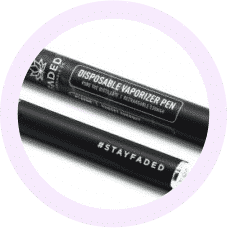
Cannabis Effects
Weed is a complex plant that is made up of a variety of compounds that have a wide range of effects. With marijuana legalization in full swing, new and innovative methods are resulting in more potent strains. In fact, marijuana is stronger now than it was a couple of decades ago. And fewer restrictions mean that cannabis research will be expanded to reach unchartered territories. For instance, McGill University’s Research Centre for Cannabis is a leader in the science behind marijuana.
Common Effects Associated With Cannabis:
|
|
It is important to note that this list is only a small sample size of the countless effects cannabis can provide a user. And these effects help millions of people around the world deal with a wide range of conditions.
Medical Benefits of Marijuana
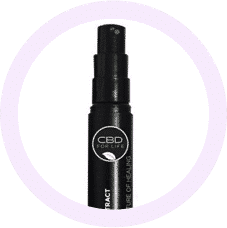 The main reason why cannabis is now legal in Canada is the extensive set of beneficial effects. What’s even better is that the list of beneficial effects continues to rise with each given day.
The main reason why cannabis is now legal in Canada is the extensive set of beneficial effects. What’s even better is that the list of beneficial effects continues to rise with each given day.
Not all users take marijuana for recreational purposes. Many are medical marijuana users who need weed to help with a wide range of conditions. In fact, seniors have experienced the highest increases in cannabis usage rates since legalization. It makes sense since they are the age group who would most benefit from the effects of cannabis.
Surprisingly, teen usage rates are down since weed became legal. This is the case even though the selection of marijuana dispensary has increased.
Common Medical Uses of Marijuana:
|
|
|
It is important to note that this list is not exclusive as there are thousands of uses for canabis.
So now I guess we should talk about the side effect, shouldn’t we?
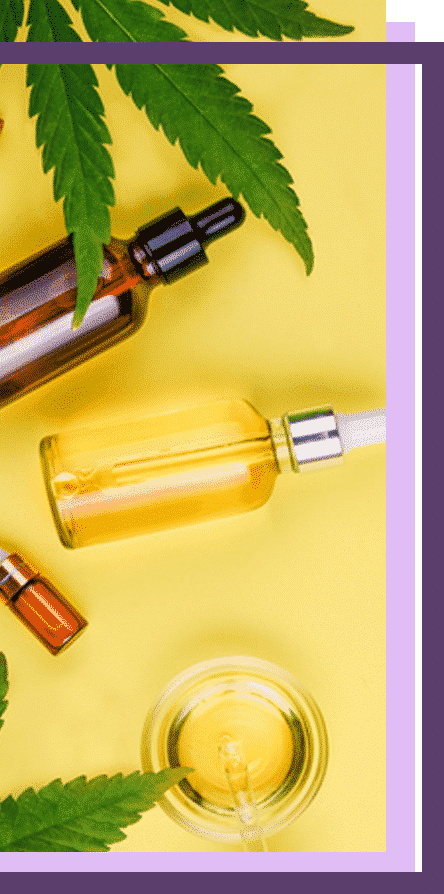 Side Effects of Weed
Side Effects of Weed
With the good comes the bad. Cannabis is a psychoactive drug and therefore induces intoxication. This impairment can lead to a number of dangerous scenarios if the user is careless or irresponsible.
Perhaps the most common is a slow reaction time that can affect driving ability. It is a common misconception that driving while on weed is safer than when sober. Studies have shown driving while under the influence of large does of cannabis is indeed dangerous. Also, Mothers Against Drunk Driving (MADD) takes a strong stance against toking and driving. Additionally, more than half the Canadian public believes 3 hours should elapse before driving.
Furthermore, it is recommended users not operate heavy machinery or undertake dangerous activities while under the influence of cannabis. Basically, anything remotely dangerous that requires quick reaction time and alertness should be avoided.
In addition to accidents, cannabis is known to come with a handful of negative effects. However, it is widely reported that any side effects are often minor and short-lived. In fact, users often do not even notice the side effect at all in many cases.
However, there are instances when this is not the case and negative effects arise. This is usually due to some degree of overconsumption or mixing of substances. Usually, this can be attributed to improper use or irresponsible actions. It can even be just by accident at times.
So what are the main negative effects that a user needs to be mindful of?
Most Common Side Effects Associated With Marijuana:
|
|
|
This is list not exclusive, as there are many other potential dangers associated with cannabis use. However, the negative effects are usually short-lived and are rarely anything to worry about. Just remember to stay calm and relaxed and know that everything will be okay. In fact, the more relaxed you are, the less negative the effects will be.
There are also cases where cannabis can be addicting. Marijuana is not known for being highly addictive, but studies have shown addiction can be influenced by the user’s genetics. Although cannabis does have addictive properties, they are minor compared to other substances. Studies have shown that marijuana is not a difficult drug to quit.
How Long Does Marijuana Stay in Your System?
As previously outlined, cannabis can provide a wide range of therapeutic effects and benefits. As previously mentioned, many of these effects are relatively short-lived and subside rather quickly. But even though the effects aren’t being felt doesn’t mean the THC is completely gone from your system.
So how long does marijuana stay in your system? Well, the answer is not so clear cut and there are a number of variables that need to be considered. THC can be found in the system from days to months. How much, how often and body type all play a role in determining how long weed remains in the body.
Below we will outline 6 different variables that will determine how long weed will stay in your system.
-
Frequency of Use
The frequency that an individual uses cannabis will largely affect the duration of cannabis staying in the system. For instance, many first time users can expect the THC to remain in their system for about 3 days. Whereas a daily cannabis user can have traces of THC remaining for around a month. THC can stick around for about 7 days for moderate marijuana users who take weed 3-4 times a week.
-
Potency of Cannabis
The potency of cannabis is another large factor in determining how long THC will stay in the system. For instance, the higher the level of THC, the longer it will take to metabolize. That is, the stronger the weed the harder it is to get out of your system.
-
Amount of THC
However, it is important to note that it’s actually the total amount of THC that makes a difference. Having potent cannabis won’t do much if you don’t smoke enough of it. Therefore, the more THC you take, the longer the weed will stay in the system.
-
Method of Consumption
Also, the method of consumption is a variable to consider. For example, smoking or vaping weed causes THC to enter and leave the system faster than taking edibles. Weed edibles take much longer to break down and therefore take much longer to metabolize.
-
Body Chemistry
Cannabis affects everyone differently. This makes sense as everyone is unique and will react with THC in different ways. THC is a lipid-soluble chemical that binds to fat in the body. Therefore, the weight and metabolism of the particular user will greatly affect how the THC is broken down. Basically, people with higher body fat percentages and lower metabolisms will break down THC slower.
-
Type of Drug Test
The method of detecting THC in the system will all have different results and are used in different situations.
- Urine Tests can detect THC from 3 to 30 days depending on the factors mentioned above.
- Saliva Tests are able to trace THC from 1 to 3 days after the last use.
- Blood Tests cant detect THC for a very long time as it leaves the bloodstream rather quickly. These tests can only detect THC from 3 to 4 hours after the last use.
- Hair Tests have the best THC detection of the test. These tests can trace THC for up to 90 days after the last use.
Is There a Quick Way to Get THC Out of Your System?
You might be wondering if there is a way to metabolize THC faster, and the answer is no. There are currently no safe ways to break down THC quicker so that it leaves the system sooner. For THC to break down quicker you need to lower the concentration of THC in the body to speed the process up.
Now that we know about the effects and uses, how do you smoke weed?
How To Smoke Weed?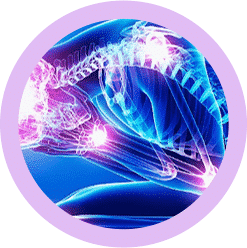
If you are new to cannabis, you might think there is only one way to smoke weed. Well, you would be wrong as there are many creative ways to take marijuana. On top of that, the different methods have their own set of unique traits. Cannabis has been around for thousands of years and methods of consumption have been created and perfected over time.
Smoking remains the most popular way to take cannabis by far, but there are many alternatives to choose from. What’s even better is that new methods are being created all the time.
Let’s take a look at some of the most common ways to smoke weed.
Joint
Anyone who knows anything about cannabis knows what a joint is. For the others, a joint is cannabis buds that have been broken up and rolled up using rolling paper. It is basically a cigarette with cannabis instead of tobacco and no filter. But once lit up no one will mistake the joint for a cigarette.
So how do you craft one of these wizardry creations?
How to Roll a Joint
- Step 1: Buy weed and rolling papers
- Step 2: Break up the bud using a weed grinder or fingers
- Step 3: Place the desired amount of broken up weed onto a rolling paper (sticky side up)
- Step 4: Hold the rolling paper with weed in it with your index fingers under the far side of the rolling paper
- Step 5: With your thumb, pack down the cannabis until you are able to easily roll it up
- Step 6: With your thumb, roll the closer side of the rolling paper up and down to continue packing the weed down until it is shaped like a joint
- Step 7: Make sure the tip of the closest side of the paper is tucked into the far side of the inside of the rolling paper.
- Step 8: Roll up the joint and lick the sticky edge and attach it the rest of the joint
- Step 9: Light up your joint and enjoy it!
If these instructions are confusing for you, there are plenty of videos on Youtube showing the joint rolling process. It could be easier to learn by watching someone do it themselves.
Or there are pre rolled joints for those who just want the convenience of being able to skip the whole rolling process. However, if you are going to buy pre rolled marijuana, you want to buy it from a trusted source. You never know what can be in a pre-rolled joint until you smoke it. A company like DailyMarijuana is a good source for pre rolled joints Canada.
Blunt
Next, there are blunts. These are larger versions of a joint and are rolled in blunt wraps. The blunt paper is often made up of the same paper used to roll cigars. It is important to note that blunt wraps contain nicotine since many of them are made from tobacco leaves.
How to roll a blunt
- Step 1: Buy cannabis and blunt wraps
- Step 2: Break up the bud using a weed grinder or fingers
- Step 3: Place the desired amount of broken up weed into the blunt wrap (sides pointed up)
- Step 4: Hold the rolling paper with weed in it with your index fingers under the far side of the blunt paper
- Step 5: With your thumb, pack down the cannabis until you are able to easily roll it up
- Step 6: With your thumb, roll the closer side of the blunt wrap up and down to continue packing the weed down until it is shaped like a blunt
- Step 7: Make sure the tip of the closest side of the paper is tucked into the far side of the inside of the blunt paper.
- Step 8: Roll up the blunt and lick the edge where you want it to attach and roll the blunt up
- Step 9: Grab some munchies and light up your blunt
As pointed out in the joint section, rolling is not for everyone. This is especially true for blunts since they are much more difficult to roll than joints. Luckily, there are pre rolled blunts that are available when you buy weed online at a cannabis store.
Bong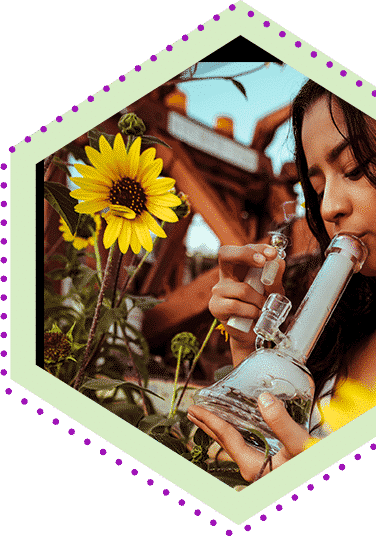
An alternative to smoking joints or blunts is to use a bong. A bong is a weed accessory that is often made of glass and consists of a bowl and a chamber. Bongs are relatively large weed accessories so they are not normally meant to transport around.
Basically, there is an area that the user can place their weed, a chamber that the smoke gathers, a tube that for the smoke to travel through, and an opening so the user can inhale. You can add water to many of them as well. It is said to provide a much smoother hit.
However, this is a bong in its most basic form and there are many more sophisticated contraptions out there. Cannabis enthusiasts have come up with many interesting ideas when making unique bongs.
Lastly, it is important that you clean your bong thoroughly and often since they can get very dirty quickly. They are known to collect bacteria that are not healthy to inhale. Besides, it starts to make the weed taste gross after a while if not cleaned properly.
Lucky for you there are plenty of guides on how to clean a bong available online.
Weed Pipe
A pipe is basically a lesser version of a bong with fewer parts. Weed pipes work in much the same way as a bong but are normally much more compact. This makes cannabis pipes easier to carry around with you.
To use a weed pipe, all that is needed is to fill the bowl with broken up cannabis, light the buds up and inhale through the other end.
Similar to bongs, weed pipes should be cleaned often and thoroughly. This is especially true for water pipes as bacteria can thrive because of the moisture.
Weed Vaporizer
An alternative to smoking cannabis is vaping weed with a tool called a vaporizer. Many people think smoking and vaping are the same thing, but they are actually very different. They do share many similarities, but they are unique in their own right.
There are two main types of vaporizers: A dry herb vaporizer and a vape pen (vape battery). Vape pens are normally used to vape cannabis concentrates such as THC vape juice, THC distillate or shatter.
A vaporizer works by heating up the weed or concentrate, creating a vapour that the user inhales.
Vaping is thought to be less damaging than smoking, but the jury is still out as vaping is still relatively new.
Cannabis Dosage Chart
Dosing cannabis buds can be tricky at times since it is hard to know how much THC is being smoked. This is especially true for newcomers who don’t have the experience of smoking countless joints.
Therefore, it is best to use your own personal judgment and listen to your body if it starts getting too much to handle. It is always a good idea to start off slow and work your way up over time as tolerance levels increase. The good news is that taking cannabis flowers is hard to overdo.
Regardless, below is a cannabis dosage chart for reference. As previously mentioned, many different factors influence how someone metabolizes THC, so use this THC dosage chart only as a guideline.
|
LEVEL |
(THC) |
DOSE (THC) |
USERS |
|
No High |
< 3% |
Non-Psychoactive |
Don’t want to get high |
|
Light |
3 – 10% |
Light |
Beginner Users |
|
Moderate |
10 – 15% |
Medium |
Intermediate Users |
|
High |
15 – 20% |
Intense |
Heavy Users |
|
Hero |
> 20% |
Hero |
Hero Stoners |
Many believe the longer you hold in the smoke, the more THC will be absorbed, and the higher you’ll get. I’d even bet that you’ve attempted this yourself at one point or another, or have seen someone try. I know I have many times in my life. Especially during times when my stash is getting low.
However, studies show that holding in weed smoke does not have a noticeable effect on getting higher. As long as you hold in the smoke for the ideal time, the body does not absorb much more. However, this is only one study and I find myself still holding in my tokes from time to time.
Edibles
Now that we know the common methods to smoke or vape cannabis, let’s talk about non-smoking alternatives. The most popular of these alternatives is weed edibles.
Cannabis edibles are growing in popularity since legalization and for good reason. What’s not to like about mixing THC with your favorite food items? There are baked goods, THC gummies, cannabis chocolates, weed tea, and more.
Basically, if you can eat it, you can turn it into a pot edible. Just remember that some foods work better together with THC than others.
Also, it’s important to know that marijuana edibles interact with the body differently, so different dosing instructions should be followed. For more information on weed edibles, please visit the edibles Canada page.
 Different Levels of
Different Levels of
Cannabis Quality
Now that we know what weed is, the effects, and different methods of consumption, let’s talk about the different qualities. What I mean by quality is how good the cannabis is. In fact, there is a certain science behind quality cannabis.
The quality of weed is very important because you want your cannabis to smell, taste, and feel great. It makes a huge difference if your weed tastes like the sweetest, fruitiest, earthiest, skunkiest, and/or dankest thing that has ever hit your taste buds. Also, it is much better than it looking brown and tasting like hay.
It is therefore important to buy weed at a trusted weed dispensary. Quality can go a long way in making you feel good about your purchase. Being satisfied with your marijuana allows you to enjoy the true effects of your smoke.
Let’s take a look at the different grades of weed you can find on the market.
Top Shelf Weed (AAAA Weed or Quad Weed)
First comes the top shelf weed. I’m talking about the best of the best. These premium buds are commonly known as AAAA weed, quad weed, or just quads. These are the top sellers for the average weed shop.
The best cannabis farmers dedicate a lot of time and effort into crafting such premium flowers. It takes a certain love for their craft to be able to produce AAAA weed. The cannabis would have had to be grown, cut, dried, cured, and stored properly to reach premium status.
The experience, coupled with the right equipment help get these buds on the right track. It can be certain that each step of the process is done correctly and without any mishaps.
Triple A Weed (AAA Weed)
A step down you have triple A weed (aka AAA Weed). These flowers have just as much going for them as quads, but maybe 1 or two things might be a bit off. Maybe the buds are not dense enough, or maybe they were cut a week too early. Whatever the case, there would have had to be something to warrant it being graded a point down.
Budget Buds (AA Weed)
One step lower and you have budget buds or AA weed. These buds usually have a more serious flaw than triple-A cannabis. For example, the nuggets might be very small, or the buds might not be as visually appealing. However, a lot of the time these budgetbuds will still do the job and then some.
These buds are perfect for those looking for a deal on decent cannabis that still gets you high as ever. It is not hard to find marijuana with this quality on special discounts.
Cheap Weed (A Weed)
Next is the cheap weed (A weed). This is the lowest quality cannabis you will likely find in a marijuana dispensary. Usually, there is something majorly wrong with these buds, but they are still fine to smoke.
Maybe they are just really ugly looking and airy buds, or have some light burn on them. Or maybe they weren’t cured at all and have a harsh taste to them.
Anything lower than cheap weed of A quality should be avoided as A weed is usually found at low prices. To get lower grade cannabis, you’d have to buy it on the black market from a dealer who doesn’t care. It is much safer to buy your cannabis online from a trusted source.
Shake/Trim
Some people mistake shake and trim for low-quality weed. This is a common misconception. The shake from premium quality cannabis can taste and be more potent than buds from low-quality weed.
Shake is just the small leaves, bits of buds, and crystals (THC) that have fallen off the flowers. Of course, the buds from that produced the shake would be much better than the shake itself.
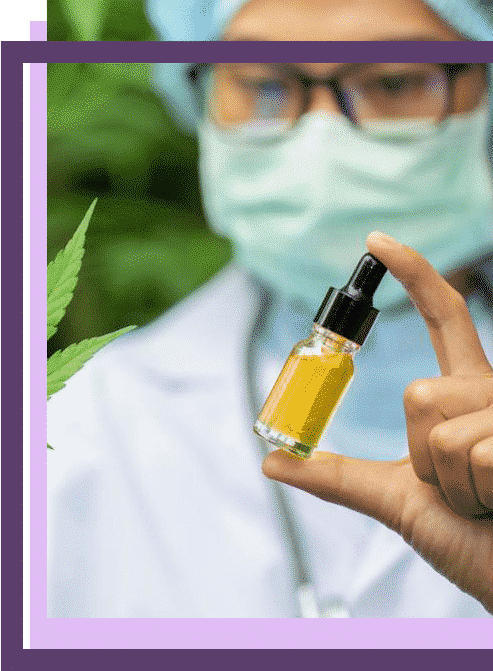 Marijuana
Marijuana
Measurements
Now that we know the different qualities of cannabis, let’s talk about how to measure weed. This is a good skill to have so that you can minimize the chance of you getting ripped off.
First, let’s start off with the main terms: gram, eighth, quarter, half, ounce, and pound.
- The Gram is the lowest denomination that you need to be concerned about. A gram of weed is normally the size of a small nugget and can roll 2-3 joints.
- Next, there is an eighth of weed (1/8th). And eight is equal to 3.5 grams of weed.
- Then, there is a quarter ounce of weed. A quarter ounce is equal to 7 grams of weed.
- A half ounce of weed is equal to 14 grams of weed.
- An ounce of weed is equal to 28 grams of weed.
Then moving into bulk weed territory we have a quarter pound of weed. A quarter pound of weed is equivalent to 4 ounces or 112 grams of weed.
- A half pound of weed is equal to 8 ounces or 224 grams of weed.
- Finally, we have a pound of weed. A pound of weed is equal to 16 ounces or 448 grams of weed.
Cannabis Measurements Chart
GRAMS |
OUNCES |
POUNDS |
| 1 | – | – |
| 3.5 | ⅛ | – |
| 7 | ¼ | – |
| 14 | ½ | – |
| 28 | 1 | – |
| 112 | 4 | ¼ |
| 224 | 8 | ½ |
| 448 | 16 | 1 |
Obviously the amounts can be higher, but not many people are concerned about such large quantities of cannabis. If you are buying weed in quantities in the pounds, you are likely to be getting wholesale bud prices.
Growing Cannabis
How To Grow Cannabis?
Growing cannabis can be a complicated task at first. But with practice and experience, it can become an enjoyable activity that yields beautiful cannabis flowers.
Planning and Preparation
The first thing you should do before growing is some research online. It’s never a good idea to just jump right into it without knowing anything about the cannabis plant itself.
The next thing to do is to decide whether you want photoperiod plants or autoflowers. You then also want to decide what you will be growing in. There are soil, coco-coir, or super soil mixtures that you can choose from.
You also want to buy all the equipment and gear you will be needing. This includes pots, lights, fans, a grow tent, fertilizers, and any other pieces of equipment needed.
It is important to understand the importance of Nitrogen (N), Phosphorus (P), and Potassium (K). These are the 3 main chemicals that a cannabis plant requires. Also, Calcium (Ca) and Magnesium (Mg) are other common requirements. However, there are many other micronutrients the plant needs as well.
Another thing to be on the lookout for is insects. Every grower has had to deal with pests at one point or another. This is especially true for outdoor grows since you have little control over nature. Indoors is a bit easier to manage, but once certain bugs get in, they are very hard to get out. For instance, root aphids, spider mites, and fungus gnats are common pests that love marijuana.
Once you have all the stuff you need and a solid plan, you can begin the growth cycle.
Seed Germination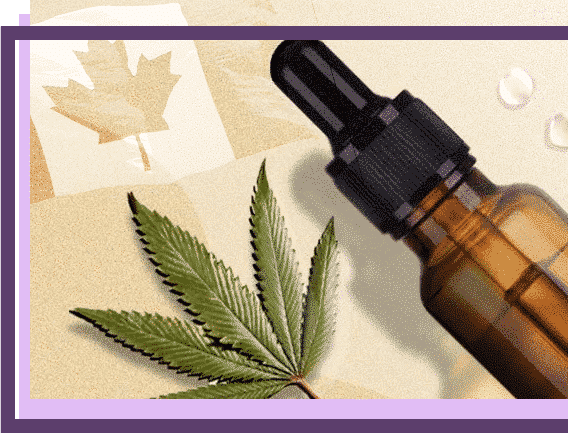
The first step is to germinate the seeds. There are a number of different ways to do this including the paper towel method. This is where you place the seeds into a glass of water for 10-16 hours, then place it between paper towels until they sprout. Basically, the seed will sprout when it comes in contact with moisture and heat. However, be careful not to drown the seed.
Next, you plant the seeds in the medium and make sure to give them at least 16 hours of light. Then you just water them as needed until they are large enough to handle feeding. Be sure to do some research as too much or too much water can have damaging effects.
Vegetative Cycle
The next phase is where the plant grows the most leaves and branches. The final harvest will largely depend on how the vegetative time went. Generally speaking, the more growth and healthier the plant, the larger the yield.
The vegetative growth can last as long as the light schedule doesn’t drop below a certain amount of light. In theory, a cannabis plant can veg for over a year if conditions are right.
When the plant is a certain height, indoor growers often use 12 hours of darkness to end the vegetative cycle. The 12 hours of dark must be done each day during flower or there can be complications. For example, the plant can revert back to vegging or the plant might develop seeds from being stressed.
Just be mindful that some marijuana plants can double or even triple their size after being put into flowering.
Flowering Cycle
Perhaps the most enjoyable time of a grow is the flowering cycle. This is the time when the buds grow into prime time aromatic ganja.
A 12/12 light/dark light schedule initiates the flowering process. This is time that the cannabis plants grow the buds that they are known for.
In the first 3 weeks, the plant will continue to grow, and even double in size in most cases. It’s during this period that the plant changes its chemistry to prepare for bud production.
Weeks 4-5 the buds still start to appear and the plant will stop growing. This is when the energy starts going towards producing buds. This is typically when the plant stops needing as much nitrogen and starts needing more potassium and phosphorus.
Weeks 6-8 new bud sites will continue to appear and spaces on the branches will start filling. This is when a lot of the crystals (THC) start to really show up. The aromas will begin to get stronger as well.
Weeks 9 and on the buds will get fatter and denser and the hairs will curl in. The aromas will really be noticeable during these weeks. In addition, the crystals will start to pile up and the buds should be covered and sticky. It is during this period that you want to be mindful of mold and ways to prevent it.
Different cannabis strains take longer to flower than others, so it is important you know the expected flowering time for your plant. Also, human and environmental errors can cause longer flowering times. In addition, things such as mold, bad weather, or impatience can lead to unexpected flowering times. Therefore, it is important to use your own judgment and take the time to know your plants.
Or if growing weed is too difficult, not permitted, or just not your thing, you can always buy your marijuana online. In fact, you can order from the comfort of your home, and have it delivered right to your door.
How To Dry & Cure Weed
If you do grow yourself then you will need to know how to dry and cure your harvest. A proper drying and curing process can be the difference between premium and garbage can weed. There have been people who have lost entire crops due to improper drying or curing.
The first thing to do after cutting down your plants is to find a place to hang them to dry. Some people like to trim the buds down and take off a lot of the leaves. Others prefer to keep many of the leaves on so that it extends the drying process. This allows more time for chlorophyll to break down.
The buds should be dried until you can snap a branch and you can hear it break, but not snap off. The buds should be mostly dry to the touch, but not too dry that pieces crumble off.
The next step is to place the buds into airtight jars and keep the relative humidity around 59-63%. This is the start of the weed curing process. During the curing process, you will need to open the jars every now and then to replace the air and prevent mold.
For the first few days, it is a good idea to open (burp) the jars a couple of times per day. Then you can slowly decrease the frequency of burping depending on the humidity in the jars. If the humidity is 59-63%, you don’t need to burp it as often. However, it is still recommended to open the jars every now and then to replace the air.
As previously mentioned, you can store weed in airtight containers. For instance, mason jars are one of the best and most common cannabis storage vessels. These jars are better than zip lock bags as mason jars are airtight. Having an airtight glass container will prolong the shelf life of your marijuana.
Also, it is recommended to store your weed in a cool and dark location. Too high heat or too much of certain types of light can degrade THC molecules. This in turn can affect the potency and taste of the weed.
For long term storage, consider storing your cannabis in the fridge or freezer. Just be sure to use a freezer friendly bag. Freezing cannabis will help preserve the THC and terpenes and greatly extend the shelf life.
Different Types of
Cannabis Products
Now that we know all there is to know about cannabis itself, let’s take a look at its derivative products. It is clear when visiting a cannabis online vendor that there is a huge variety of cannabis-related products.
The main categories of products that originate from marijuana buds are cannabis concentrates, pot edibles, weed vapes, and CBD items.
Cannabis concentrates are basically what they sound like, a concentrated form of weed. These products are often high in THC levels since the majority of unwanted plant material is removed. This makes weed concentrates some of the most potent products found in a marijuana store.
Basically, the THC and other beneficial compounds are extracted from the buds. This can be a complex and dangerous process, so it is best to leave it to the professionals. They have the necessary knowledge, experience, and equipment for safe extraction. We’ve all heard of explosions in homes of people trying to make their own concentrates.
For marijuana concentrates to produce effects, it first must be decarboxylated. Basically, when cannabis is heated to a certain point (e.g. 220 F/105 C) for a certain time, the THCA found in raw cannabis, converts into the THC that causes intoxication.
Below is a list (with links to more information) of some of the most popular cannabis concentrates available.
-
- Hash (Hashish)
- THC Distillate
- Crumble
- Live Resin
- HTFSE
- Moon Rocks
Next, there are cannabis edibles. These ganja filled goodies are basically regular food items that are infused or mixed with THC. These tasty treats are perfect for those who do not wish to inhale any nasty chemicals into their lungs. This is perhaps the main reason why the edible Canada community is growing at such a rapid rate.
It is important to note that cannabis edibles interact with the body in different ways than when smoking. Also, it is said that weed edibles take longer to kick in and stay in your system much longer. It is therefore important to start off slow if it is your first time taking something like weed edibles.
Throughout the years, there have been new and innovative edibles being created. For instance, baked edibles such as weed brownies, pot cookies, and weed gummies are a favourite of many.
Below is a list of some of the most popular edibles available
The next category of cannabis-related products is weed vapes. Vaping weed is one of the hottest trends for the past couple of years and for good reason.
Weed vapes are known to be one of the most convenient ways to take THC products. All that is needed is a vape pen, vape cartridge, and THC vape juice. There is no prep time and no clean up necessary for the most part. In addition, using a weed vape doesn’t produce much of an odor, making it more stealthy.
Finally, there are CBD products. We talked earlier about CBD and how it is a non-psychoactive ingredient of cannabis. This means that CBD does not induce the intoxicating effects normally associated with cannabis.
Cannabidiol is the perfect choice for those who want the therapeutic benefits of cannabis but without the intoxicating effects.
Below is a list of some of the products that are made with CBD.
 The Best Place to Buy Weed Online in Canada
The Best Place to Buy Weed Online in Canada
Now that we know all about cannabis and its related products, let’s move on to how to buy weed. Finding a reliable source to order weed can be a daunting task at times. There are currently thousands of cannabis dispensaries to choose from.
So what makes a good marijuana shop? The first thing to look for is the quality of the cannabis. The best way to do this is to read customer reviews. The best cannabis stores are ones that are verified by reliable sources like Trustpilot. External sites with customer reviews are generally speaking the most reliable.
The next thing to look at is the prices of cannabis products. Some weed shops offer much better prices than others. The best deals by far are offered by online dispensaries. Arguably, the best online dispensary Canada is Daily Marijuana. The DailyMarijuana team offers some of the best prices when you order weed online with them.
One mistake people make is thinking, “what is the name of a cannabis store near me?” This is a mistake because you are limiting yourself to whatever that weed shop has in stock. So it is best not to think about “marijuana dispensary near me”, and realize there are perhaps better options. By ordering cannabis online, you can have “weed near me” all the time.
An advantage of shopping with an online cannabis store like DailyMarijuana is that they deliver right to your door. On top of that, DailyMarijuana.co services all of Canada. Their service areas include Toronto, Ontario, Vancouver, BC, Edmonton, Alberta, Montreal, Quebec, and Nova Scotia. Basically, if Canada Post can reach you, so can they.
Daily Marijuana currently doesn’t deliver to the United States. However, users from the USA can still benefit from the rich collection of information and articles. Their news/education section provides a wealth of resources to stay up to date information in the world of cannabis.



